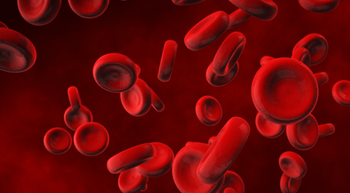
Liposomal Bupivacaine Reduces Complications and Opioid Use After Surgery
Bupivacaine liposome injectable suspension (Exparel) was found to be similarly effective in reducing pain compared with conventional bupivacaine HCL, but reduced ileus, nausea, and the need for patient-controlled analgesia and rescue IV opioid use.
Sean C. Dowdy, MD
A study reported at the recent annual meeting of the Society of Gynecologic Oncology has found that bupivacaine liposome injectable suspension (Exparel) was similarly effective in reducing pain compared with conventional bupivacaine HCL, but reduced ileus, nausea, and the need for patient-controlled analgesia and rescue IV opioid use.
“Basically, it means patients need less narcotics and still have the same pain scores,” explained Sean C. Dowdy, MD, professor and chair, Division of Gynecologic Surgery at the Mayo Clinic College of Medicine.
The research involved approximately 200 women—72 patients having staging laparotomy (hysterectomy, lymphadenectomy and omentectomy) and 121 who had complex cytoreductive surgery (staging laparotomy with extensive cytoreduction). Researchers compared the recoveries of women receiving Exparel via injection with those who received bupivacaine HCL. Cumulative pain scores were monitored for 48 hours.
“What we did here was rather than randomize, we just made a practice change and compared the results with what we were doing before,” Dowdy explained.
In the complex cytoreductive group, pain scores were no different between patients treated with Exparel and those treated with bupivacaine HCL at 24 and 48 hours. Among those treated with Exparel, use of oral morphine equivalents was lower through 24 hours (30 vs 54 mg), 48 hours (38 vs 83 mg), and for the remaining length of stay (62 vs 101 mg).
The proportion of patients who were opioid- and tramadol-free, according to the study abstract, was higher in the Exparel cohort at 24 hours (19% vs 12%), 48 hours (40% vs 28%), and remaining length of stay (39% vs 26%).
Nausea after surgery occurred less often among those receiving Exparel at 24 hours (25% vs 61%) and 48 hours (30% vs 56%). The rate of ileus also was lower (12% vs 22%).
Use of liposomal bupivacaine by injection also reduced the need for IV rescue opioids (29% vs 56%) and patient-controlled analgesia (4% vs 33.3%). Hospital stays were reduced by 3-4 days among patients receiving Exparel, Dowdy noted.
In addition to the physical benefits of Exparel, researchers found no statistically significant difference in cost. Average 30-day adjusted total costs were $31,562 and $33,498 for Exparel and bupivacaine HCL, respectively.
Today, using liposomal bupivacaine for women undergoing surgeries for gynecologic malignancies is common practice for Dowdy and his team, but he said that a belief that Exparel is more expensive than bupivacaine HCL is preventing other physicians from doing the same.
“There’s the perception that the cost is higher because it is more expensive than [bupivacaine HCL], but with this [study], we showed that it is cost neutral, which is important,” he said. Those benefits are in part because Exparel has a longer half-life (~48 hours) than bupivacaine HCL (~8 hours), Dowdy added.
Kalogera E, Bakkum-Gamez JN, Weaver AL, et al. Liposomal bupivacaine reduces total opioid requirements, rescue IV opioids, and PCA use after laparotomy for gynecologic malignancies. Presented at: 2016 SGO Annual Meeting; March 19-22, 2016; San Diego, CA. Abstract 29.
Newsletter
Knowledge is power. Don’t miss the most recent breakthroughs in cancer care.





























































































